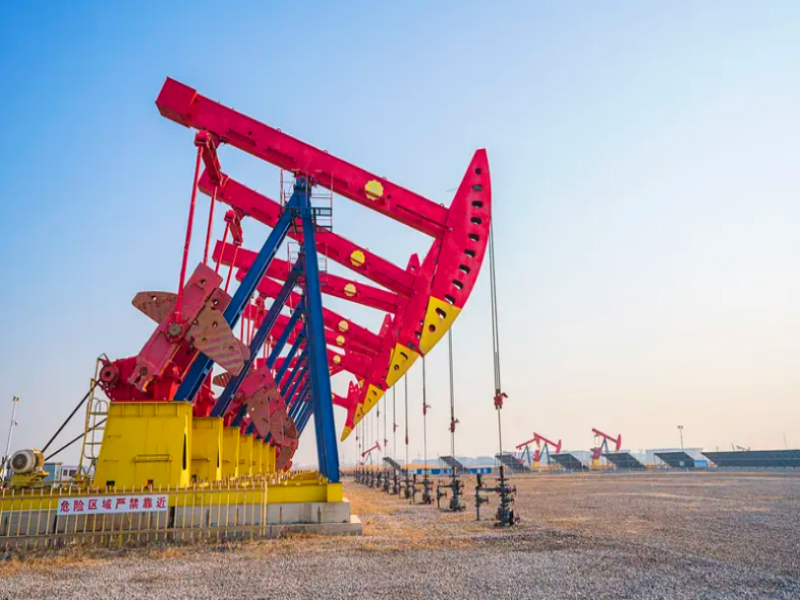Plunger lifting system is a typical manual lifting technology to deal with the problem of fluid accumulation in low-yield wells. When the oil well cannot continue to produce crude oil due to insufficient pressure, the plunger lifting system will realize the lifting of crude oil through the periodic movement of the metal plunger, which is an important branch of mechanical manual lifting.
The core goal of artificial lifting is to replenish the energy of the formation. The work of the plunger lifting system is based on the alternating conversion of natural gas expansion force and gravity in the well. This system consists of an underground plunger, a clamp, a wellhead trap and a ground controller. The entire workflow is divided into four natural stages:
The first stage: gas accumulation:
After the downhole valve is closed, the associated gas at the bottom of the tubing gradually gathers and pressurizes. At this time, the plunger stays in the position of the clamp at the bottom of the well, and the liquid column accumulated above forms a load. This process relies on the precise timing management of the manual lifting control system.
The second stage: plunger rises:
When the air pressure reaches the set threshold, the valve opens to release the expansion energy of the gas. The plunger carries the top liquid column and moves at high speed towards the wellhead driven by high-pressure gas. At this stage, the conversion of gas kinetic energy to mechanical potential energy is realized, reflecting the essence of the energy intervention of artificial lifting.
The third stage: fluid discharge:
When the plunger reaches the wellhead trap, the crude oil that is pushed to the pipe mouth enters the production pipeline. Then the trap was turned on briefly to complete the fluid delivery task.This is the effective output stage in the manual lifting cycle.
The fourth stage: plunger reset:
After the discharge is over, the air pressure at the wellhead drops. The plunger falls freely along the tubing under the action of gravity until it is re-located to the bottom clamp. The ground controller sets the interval of the next cycle according to the well condition to achieve the sustainable operation of manual lifting.

The technical advantages of plunger lifting highlight the applicability of manual lifting:
It can be directly driven by the associated gas in the well, and does not require external energy input.
The mechanical structure is simple and reliable, and the maintenance cost is lower than that of complex systems such as electric submersible pumps.
It effectively solves the intermittent production problem of unbalanced gas-liquid ratio wells and fills the blind spots of other artificial lifting technologies.
In engineering applications, this artificial lifting technology is very suitable for three types of scenarios: Stable production maintenance of low-yield wells, effusion control of shale oil and gas wells, and marginal benefit development of old oil fields. The energy-saving characteristics of this lifting system are even more significant in inclined well applications.
The modern plunger system enhances the efficiency of manual lifting through intelligent upgrades:
The sensor monitors the running speed of the plunger in real time and automatically optimizes the valve timing.
Pressure data analysis predicts the risk of wax formation and triggers preventive maintenance.
The remote control function realizes the collaborative management of multiple wells and improves the efficiency of manual lifting.
The essence of the work of the plunger lifting system is the specific practice of the manual lifting philosophy-through precise control of the conversion relationship between natural energy and mechanical movement, to achieve efficient crude oil recovery. This simple but not simple technical logic continues to promote innovation and development in the field of artificial lifting.

